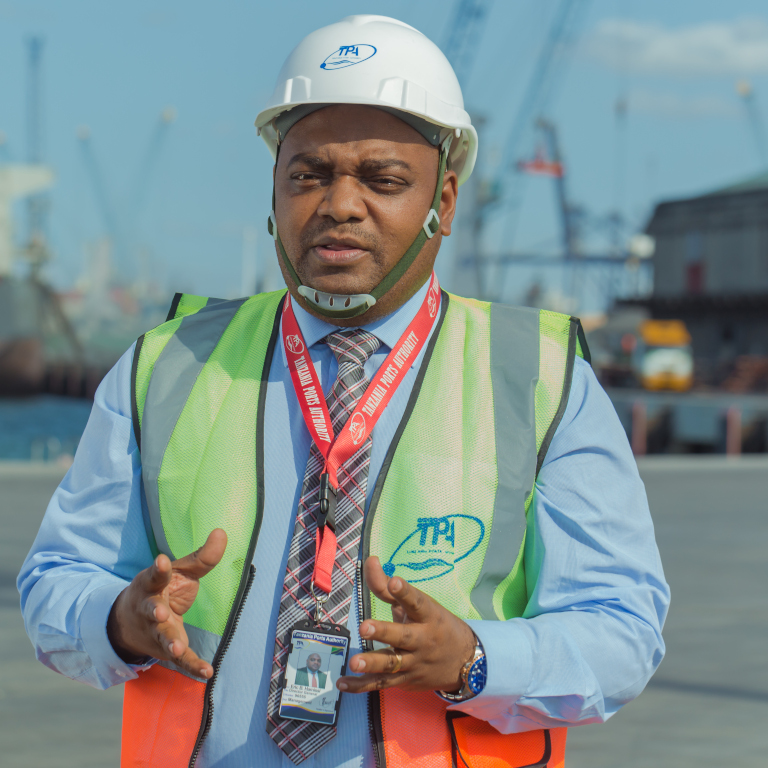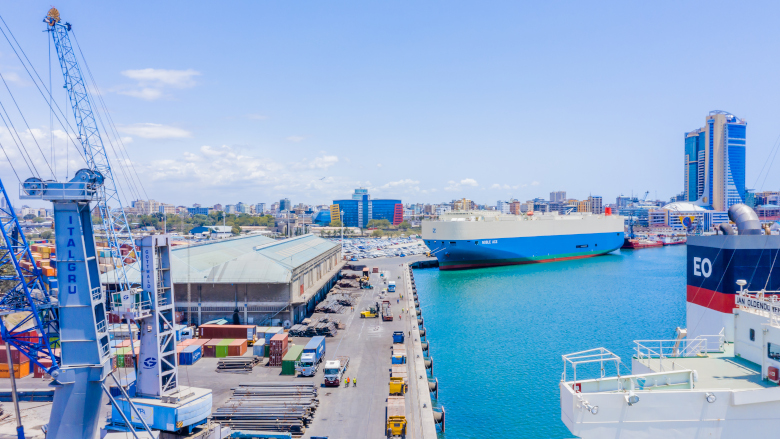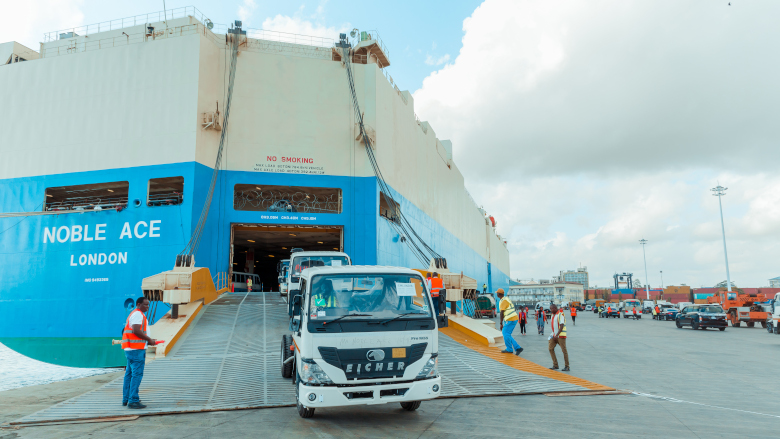The new berth is part of the $421 million Dar es Salaam Maritime Gateway Project (DMGP), which has been under implementation since 2017 with the objective of improving the effectiveness and efficiency of the Port of Dar es Salaam for the benefit of public and private stakeholders through strengthening of the physical infrastructure as well as TPA’s institutional capacity.
Financed by the Government of Tanzania jointly with the World Bank and the UK Foreign, Commonwealth and Development Office, the DMGP has supported the reconstruction of and deepening alongside berths 1–7 to 14.5 meters so the port can now comfortably host large vessels, compared to an average 8-meter draft before the expansion. Preparations are underway for the upgrading of and deepening alongside berths 8-11. The project is also currently supporting the deepening to 15.5m and widening of the entrance channel and turning basin to the end of Berth 11. In addition, the project will improve the rail platform and linkages within the port.
With the infrastructure improvements, the port is also registering more efficiency. Offloading of its first two Post-Panamax RoRo visitors was completed within 17 hours of arrival (an equivalent of three vehicles per minute), enabling the ships to depart the next day after arrival. In the past, offloading just 300 vehicles would take up to 34 hours.
Director General Hamissi said the impact of the infrastructure on the turnaround time and ease of offloading has resulted in a doubling of the number of vessels received, from six before the project to 12 per month. In sum, since the RoRo became operational, more than 150 vessels have been received and attended to within record time. Previously, ships had to queue to be served at Berth 7, the only one with a draft of more than 10.5 meters at the time.
"This situation greatly contributed to high demurrage charges," said Edward Urio, president of the Tanzania Freight Forwarders Association, which represents over 1,000 freight forwarders and logistics companies. "Vessels would queue for up to 14 to 20 days waiting for berthing space, costing some chartered vessels demurrage ranging from $25,000 to $40,000."
There is overall optimism for when the transformation will be completed. "Growth in trade through this port has a multiplier effect on our economy as 95% of domestic cargo passes through here," said Hamissi. "The port is also a crucial source of direct and indirect employment to thousands of people along the supply chains."
"Consider that when we received the 3,743 motor vehicles on the Panama in August, a good number of drivers were needed to take those vehicles to the borders of the destination countries who rely on the port of Dar es Salaam," said Tony Swai, managing director of Epic Cargo, a logistics company.
Said Mwenda: "There has been an increase in the demand for contract drivers like me, and we have been very busy working almost non-stop because the port is now receiving vessels carrying many more cars each month than before."
As an anchor port supporting not just Tanzania’s trade but also its landlocked neighbors like Rwanda, Burundi, Uganda and the Democratic Republic of Congo, Dar es Salaam has a central role in regional trade facilitation and integration. Between 2015 and 2020, for example, the volumes of trade for these countries handled at the port increased by 16.6% to 16.01 million metric tons from 13.7 million metric tons in 2015. It is projected the port will handle over 30 million tons per year by 2030. Thus, the port’s efficiency and effectiveness are key to unlocking the flow of trade and increasing the region’s overall competitiveness.



